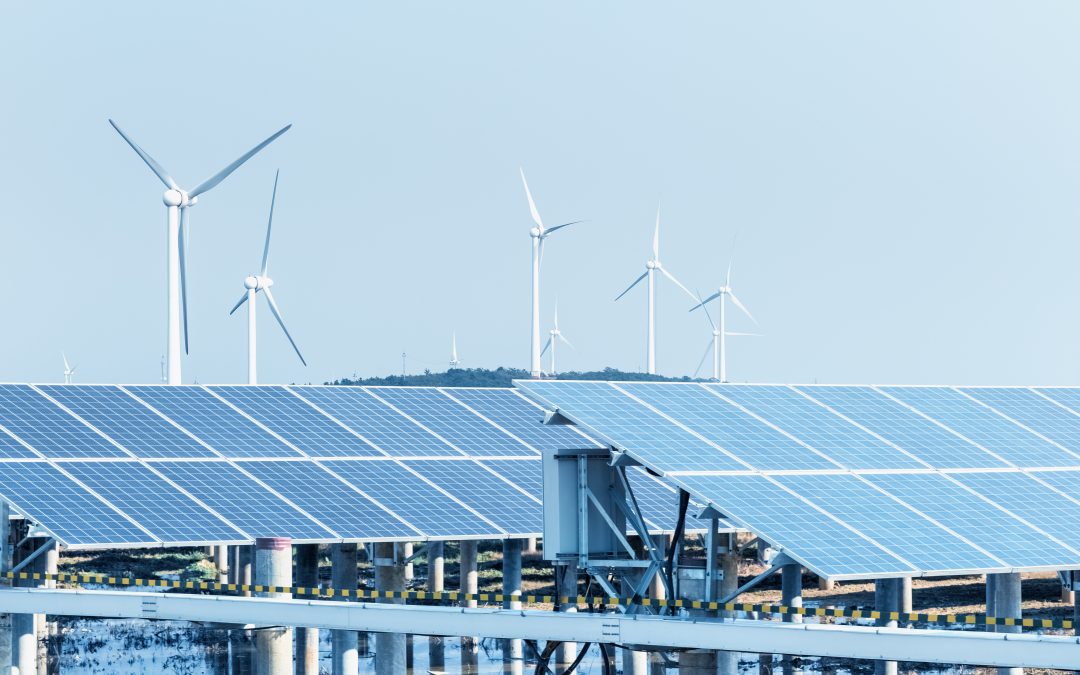As the U.S. approaches the election, clean energy in 2024 is a topic high on the agenda for many candidates. With increasing calls for sustainability, candidates are debating how best to support and modernize the nation’s energy infrastructure. Key areas under discussion include expanding electric vehicle (EV) charging networks, updating the aging energy grid, and incentivizing the adoption of solar and wind energy. Their stances could determine the pace of the nation’s clean energy transition and shape the future of renewable energy in the United States.
The Need for Clean Energy Infrastructure
The shift to renewable energy sources, particularly solar and wind, is essential for achieving carbon neutrality and mitigating climate change. However, this transition requires major investments in infrastructure, from increasing grid capacity to ensuring consistent energy availability during peak demand. As solar and wind are intermittent energy sources, updating the grid to handle variable power input while providing reliable service is a critical challenge.
Moreover, the rapid rise of electric vehicles calls for an extensive EV charging network to reduce “range anxiety” and facilitate a smooth shift from gasoline-powered cars. Solar and wind energy initiatives also need significant support, including tax incentives, subsidies, and regulatory frameworks that make renewable energy competitive with fossil fuels.
Expanding Electric Vehicle Charging Networks
EV adoption in the U.S. is rising, but the infrastructure to support this growth is still underdeveloped in many areas. A lack of accessible charging stations, particularly in rural and underserved areas, has hindered EV adoption. For the U.S. to transition fully to clean transportation, building a widespread, reliable EV charging network is critical.
Some candidates are proposing federal investment to accelerate the installation of EV chargers along highways and in communities, aiming to make EV ownership viable for all Americans. Additionally, certain candidates have called for partnerships with private companies to expand charging networks, with initiatives to ensure that low-income and rural areas are not left behind in the push for clean transportation.
Modernizing the Energy Grid for Renewables
The U.S. energy grid was built decades ago with a focus on centralized power plants, which primarily used coal, natural gas, or nuclear energy to generate electricity. Transitioning to a grid that can efficiently manage decentralized, renewable energy sources like solar and wind is crucial for clean energy success.
To support this, many candidates are advocating for grid modernization to improve efficiency and reliability. Grid modernization would involve investments in smart grid technology, energy storage solutions, and enhanced transmission lines to carry renewable power from rural areas to urban centers. By upgrading the grid, the U.S. could better manage fluctuations in renewable energy production, distribute energy more effectively, and reduce the risk of power outages during extreme weather events.
Solar and Wind Energy Incentives
Incentivizing solar and wind energy is a cornerstone of clean energy policy. Solar, in particular, has become more accessible and affordable due to advances in technology and declining costs. However, incentives are still needed to make solar a viable choice for homeowners, businesses, and utility-scale projects.
- Tax Credits and Rebates: Some candidates propose extending or expanding federal tax credits and rebates for individuals and businesses that install solar panels. These incentives make solar energy more accessible by reducing the initial cost of installation. The existing federal Solar Investment Tax Credit (ITC), which offers a 30% tax credit for solar installations, has been instrumental in increasing solar adoption, and some candidates aim to extend this or introduce additional credits for energy storage solutions.
- Subsidies for Utility-Scale Solar and Wind Projects: Utility-scale solar farms and wind projects require considerable upfront investments, but they can produce large amounts of clean energy at lower long-term costs. Federal subsidies and low-interest loans for these large-scale projects are essential for bringing more renewable energy to the grid.
- Support for Battery Storage: Solar and wind are intermittent sources of energy, making battery storage critical for stabilizing the grid. Some candidates advocate for increased federal funding and research into battery technology to improve storage efficiency and affordability.
How Candidates’ Policies on Clean Energy Infrastructure Could Shape the Future
The U.S. stands at a crossroads in clean energy infrastructure. Candidates’ stances on supporting solar, wind, EV infrastructure, and grid modernization will shape the country’s ability to meet its climate targets and lead in the global renewable energy sector.
For voters concerned about clean energy, understanding candidates’ views on infrastructure investment can offer insight into their commitment to sustainability. Candidates who propose strong incentives for solar and wind energy, prioritize grid modernization, and support EV infrastructure are likely to have a comprehensive approach to tackling climate change through infrastructure.
Why Solar Energy is Essential to Clean Energy Progress
Solar energy plays a key role in reducing the country’s dependency on fossil fuels, helping to curb carbon emissions, and ensuring energy independence. Installing solar panels on homes and businesses decentralizes power generation, lessening strain on the grid and providing backup power during peak demand.
For the solar industry, supportive policies in clean energy infrastructure mean further growth and innovation. Incentives not only drive adoption but also enable companies to invest in research and development, ultimately making solar power even more affordable and efficient.
A Clean Energy Future Through Strategic Infrastructure Investment
As the 2024 election approaches, the focus on clean energy infrastructure signals an important shift toward sustainability. Investments in solar and wind energy incentives, grid modernization, and EV charging networks are essential for the U.S. to achieve its climate goals and energy independence. By electing candidates who prioritize these investments, voters can help drive the nation toward a cleaner, greener future.
Solar companies and clean energy advocates have an important role to play in supporting and advocating for policies that build a more resilient energy infrastructure. With the right leadership and policies, the U.S. can accelerate its clean energy transition and set an example for the world.


Recent Comments